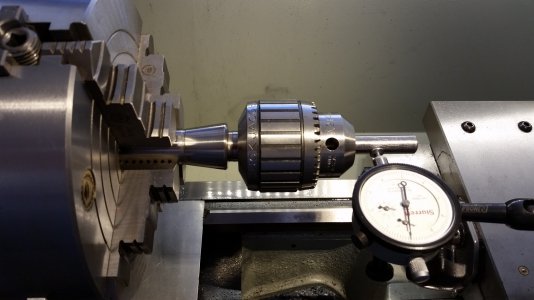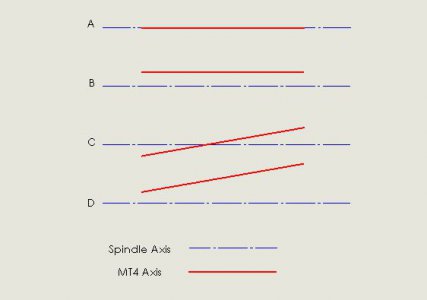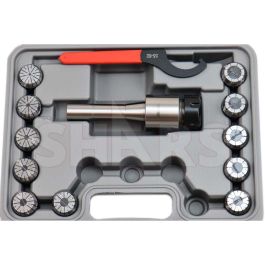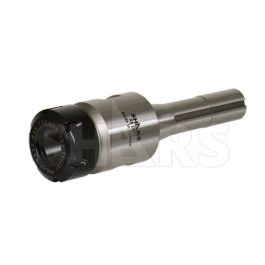- Joined
- Jun 12, 2014
- Messages
- 4,819
The spindle runout is 0.0005", so pretty low but not your typical which is around 0.0001" on better lathes. The runout on the ER chuck internal mating surface was 0.003" and 0.0045" when flipped 180 degrees. Also the nut and the seating of the ER collet can have an effect on TIR. Kind of guest work on the effect of the runout of the spindle mounting on the ER collet chuck as you would need to clock the collet at different points in the spindle, not just 180 degrees and assume one is the null and the other is the max. There are also many factors as to the chuck mount and the drawbar system as opposed to just tapping it into position (i.e. the MT surfaces may not be a perfect match and surface irregularities) It is not uncommon on mounting chucks to clock them on the spindle for minimum runout and then use an index mark in the future for mounting. To give you an example I have a Jacobs chuck with a JT mount to an R-8 collet mount. I indexed the collet in a 4J chuck for 0 TIR and then used a ground pin in the chuck and clocked it for minimum runout and then marked and locked the two together. Spindle runout on my mill is under 0.0001" so this is not a factor and it was a high quality R-8 collet, The null TIR on the 14N chuck is around 0.0004" and fairly consistent. The worse case before clocking was around 0.0011". Good enough for this type of chuck.

As far as ER chucks I have both ER-32 R-8 and ER-40 MT3 and the mating surfaces are around 0.0002" mounted, so the Banggood ER chuck is horrible. The other significant factor is that my guess is that he has a metric 1 mm ER increment set. So say you try to mount a 1/2 rod in a 13mm collet and collapse it down, the runout gets much worse at the clamping extremes, and not all ER collets are created equal. Based on my own experience with much better quality ER chucks and collets, you want a set of collets to match what you are holding imperial vs. metric. The quality/type of collet nut can also make a big difference. I use an ER-32 collet setup in my mill to setup my edge finders, the runout of my 12 mm collet mounted is 0.0002" (which is much better than my R-8. The edge finder resolution is 0.0004" so the runout of the collet system is a critical factor to get everything setup.

As far as ER chucks I have both ER-32 R-8 and ER-40 MT3 and the mating surfaces are around 0.0002" mounted, so the Banggood ER chuck is horrible. The other significant factor is that my guess is that he has a metric 1 mm ER increment set. So say you try to mount a 1/2 rod in a 13mm collet and collapse it down, the runout gets much worse at the clamping extremes, and not all ER collets are created equal. Based on my own experience with much better quality ER chucks and collets, you want a set of collets to match what you are holding imperial vs. metric. The quality/type of collet nut can also make a big difference. I use an ER-32 collet setup in my mill to setup my edge finders, the runout of my 12 mm collet mounted is 0.0002" (which is much better than my R-8. The edge finder resolution is 0.0004" so the runout of the collet system is a critical factor to get everything setup.




